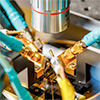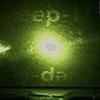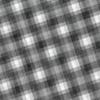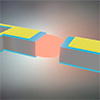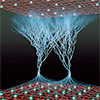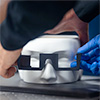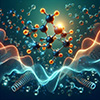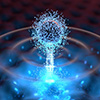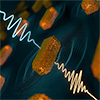Polychlorinated biphenyl
A polychlorinated biphenyl (PCB) is an organic chlorine compound with the formula C12H10−xClx. Polychlorinated biphenyls were once widely deployed as dielectric and coolant fluids in electrical apparatus, carbonless copy paper and in heat transfer fluids.
Because of their longevity, PCBs are still widely in use, even though their manufacture has declined drastically since the 1960s, when a host of problems were identified. With the discovery of PCBs' environmental toxicity, and classification as persistent organic pollutants, their production was banned by United States federal law in 1978, and by the Stockholm Convention on Persistent Organic Pollutants in 2001. The International Agency for Research on Cancer (IARC), rendered PCBs as definite carcinogens in humans. According to the U.S. Environmental Protection Agency (EPA), PCBs cause cancer in animals and are probable human carcinogens. Many rivers and buildings, including schools, parks, and other sites, are contaminated with PCBs and there has been contamination of food supplies with the substances.
Some PCBs share a structural similarity and toxic mode of action with dioxins. Other toxic effects such as endocrine disruption (notably blocking of thyroid system functioning) and neurotoxicity are known.
The bromine analogues of PCBs are polybrominated biphenyls (PBBs), which have analogous applications and environmental concerns.
An estimated 1.2 million tons have been produced globally. Though the federal ban was enforced by the EPA as of 1979, PCBs continued to create health problems in later years through their continued presence in soil and sediment, and from products which were made before 1979. In 1988, Tanabe estimated 370,000 tons were in the environment globally and 780,000 tons were present in products, landfills and dumps or kept in storage.
Check out these latest Nanowerk News:

